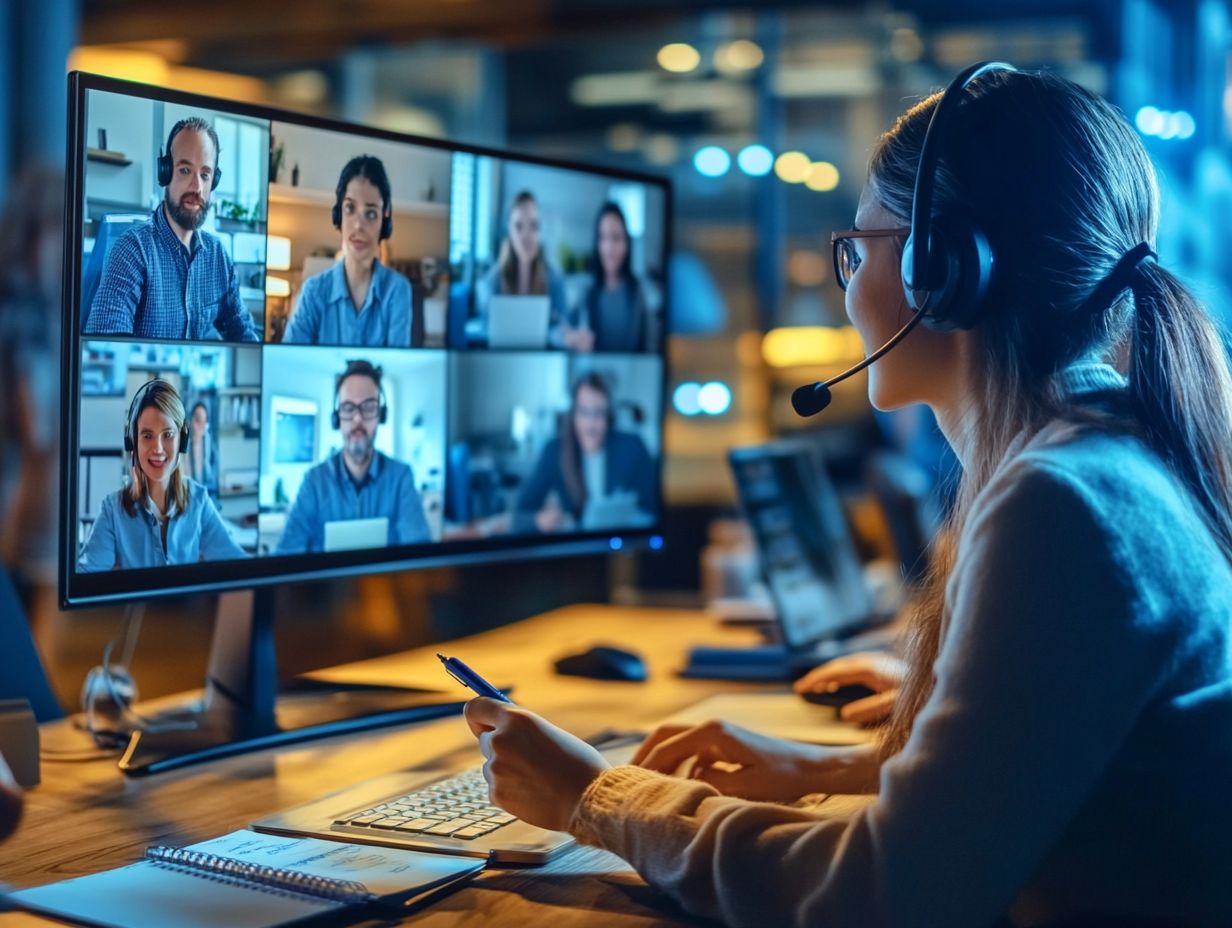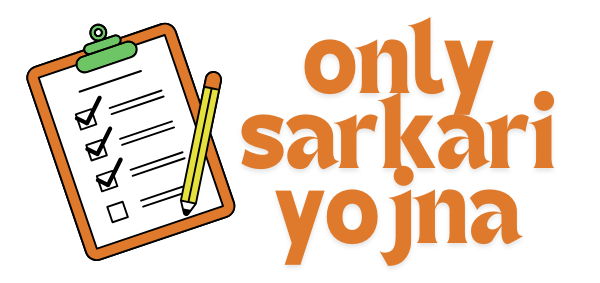In the contemporary digital landscape, online meetings have emerged as a fundamental aspect of collaboration, necessitating a focus on ensuring their productivity.
This article examines the significance of productive online meetings, emphasizing the importance of efficiency in our virtual interactions.
We will address essential strategies for elevating online meetings, including effective preparation, the establishment of clear objectives, and best practices in communication.
Additionally, we will identify common challenges and provide tools to maintain participant engagement and focus. This discussion aims to transform virtual gatherings into dynamic, results-oriented experiences.
The Importance of Productive Online Meetings

In the contemporary digital landscape, the significance of productive online meetings is paramount, as they provide the foundation for effective virtual collaboration. These meetings ensure that teams can communicate clearly and achieve their objectives, irrespective of geographical constraints.
By utilizing technology effectively and adhering to established meeting etiquette, organizations can optimize time management, enhance participant engagement, and ultimately improve meeting outcomes. As remote work continues to gain prominence, it is essential to understand the nuances of online meetings to foster team dynamics and maintain accountability within groups, thereby ensuring that each interaction contributes meaningfully to achieving collective goals.
Why Productivity Matters in Online Meetings
Productivity in online meetings is essential, as it directly affects participant engagement and decision-making. Ensuring that each individual involved comprehends the purpose behind the meeting’s agenda is paramount.
When meetings are structured effectively, employing techniques such as time blocking, teams can concentrate on actionable items, enhance accountability, and promote constructive discussions.
Low productivity can result in substantial wastage of time and resources, leading to frustration among team members and adversely affecting overall morale. When agendas lack clarity or participant roles are undefined, meetings often devolve into unstructured dialogues that yield minimal results, leaving attendees dissatisfied.
To address this issue, teams should prioritize the establishment of clear agendas in advance, assign specific roles to participants to ensure meaningful contributions, and implement effective follow-up strategies to monitor progress on action items.
By cultivating an environment of clarity and collaboration, organizations can not only increase productivity but also significantly enhance team morale.
Setting the Stage for Productive Online Meetings
Establishing a conducive environment for productive online meetings requires meticulous preparation and planning. This includes the development of comprehensive meeting agendas, verifying that all technological setups are functioning correctly, and adhering to established meeting etiquette.
By allocating adequate time for agenda formulation and familiarizing themselves with the tools available for remote collaboration, teams can significantly enhance the effectiveness of their discussions and reduce potential distractions.
Preparation and Planning
Effective preparation and planning for online meetings commence with scheduling that accommodates all participants, along with the timely distribution of agendas that clearly outline the key topics for discussion. The integration of technological tools for remote facilitation can streamline the process, ensuring that follow-up actions are clearly defined and tracked after the meeting.
To maximize the effectiveness of these meetings, it is essential to consider various time zones, utilize calendar tools for scheduling, and send reminders as the meeting approaches. Providing all participants with access to necessary documents in advance fosters a sense of readiness.
Technology plays a pivotal role in enhancing engagement through features such as polls, breakout rooms, and shared screens.
Utilizing platforms that support these tools can significantly improve group dynamics, thereby encouraging participation and interaction. Additionally, participants should be advised on best practices for remote engagement, such as maintaining eye contact and minimizing distractions, to create a more productive environment.
Establishing Clear Objectives and Expectations
Establishing clear objectives and expectations for online meetings is essential for facilitating structured discussions and ensuring that all participants comprehend their roles and contributions. This approach enables teams to create a framework that promotes accountability and encourages engagement strategies that foster active participation from all attendees.
Defining specific goals for a meeting can significantly enhance its effectiveness, as each participant is aware of what to focus on and how to adequately prepare in advance. For example, when a project team convenes with the objective of brainstorming new ideas for a product launch, clearly communicating this expectation beforehand allows members to come equipped with insights and suggestions.
This strategy not only optimizes the time spent in meetings but also nurtures an environment where every participant feels valued and invested in the discussion. Ultimately, adopting this practice elevates participation levels and drives results, fostering a culture of accountability and collaboration within the organization.
Effective Communication in Online Meetings

Effective communication in online meetings is essential for ensuring that all participants remain focused and engaged throughout the discussion, as it directly influences the meeting’s success.
Implementing engagement strategies and cultivating an environment conducive to virtual networking can significantly enhance participant focus.
Additionally, attention must be given to critical factors such as audio quality and visual aids to facilitate clear communication.
Best Practices for Virtual Communication
Implementing best practices for virtual communication necessitates the use of appropriate communication tools and video conferencing software to facilitate seamless interactions. Employing effective interaction techniques and establishing feedback loops can significantly enhance the quality of discussions while ensuring that presentations are concise and focused on key points.
When participants utilize platforms such as Zoom, Microsoft Teams, or Google Meet, they create an environment that encourages real-time dialogue and collaboration. Incorporating techniques such as polls or breakout rooms can further engage attendees, prompting active participation rather than passive observation.
For instance, after presenting key information, utilizing feedback loops by encouraging questions or conducting brief surveys can clarify misunderstandings and provide valuable insights into the audience’s perspective. This adaptive communication approach not only enhances understanding but also fosters a sense of community, rendering meetings more productive and enjoyable.
Tools and Techniques for Productive Online Meetings
The utilization of technology and various collaborative tools is essential for enhancing the productivity of online meetings, as it enables teams to conduct effective brainstorming sessions and streamline communication.
Features such as screen sharing and digital whiteboards provide visual support and foster a more interactive experience, allowing participants to contribute ideas and collaborate in real time.
Utilizing Technology and Strategies
Utilizing appropriate meeting software and brainstorming tools is essential for improving teamwork and fostering creativity in online meetings. The integration of technology can streamline processes and improve participant engagement. Additionally, the incorporation of visual aids and adherence to effective meeting frameworks can further support structured discussions, ensuring that objectives are met efficiently.
To make an informed decision among the numerous meeting software options available, it is imperative to first assess the specific needs of the team. Whether the emphasis is on video conferencing, screen sharing, or interactive whiteboards, aligning the selected tools with the team’s objectives is crucial.
Exploring features such as chat functions, recording capabilities, and integration with existing project management systems can significantly enhance the overall meeting experience. Furthermore, implementing brainstorming tools that facilitate real-time idea sharing and collaboration can not only increase participation but also generate innovative solutions, leading to more productive outcomes.
Common Challenges and How to Overcome Them
Common challenges in online meetings, including distraction management and maintaining participant engagement, can significantly impede productivity and the overall effectiveness of remote work.
By proactively identifying these challenges and implementing targeted engagement strategies, teams can establish a more conducive environment for discussion.
Additionally, focusing on meeting evaluations will enhance future interactions and improve overall outcomes.
Troubleshooting and Problem-Solving

Effective troubleshooting and problem-solving during online meetings necessitate a proactive approach to technology setup, as well as a clear understanding of participant roles to facilitate smooth interactions. By promoting real-time feedback and fostering an environment conducive to remote facilitation, teams can swiftly address issues and maintain productivity.
Technical challenges, including connectivity issues, audio or video malfunctions, and difficulties with screen sharing, are common obstacles that can disrupt online discussions. To mitigate these problems, it is essential for participants to familiarize themselves with the tools being utilized and to conduct necessary checks prior to the commencement of the meeting.
Designating specific roles, such as a designated technical support person, can streamline the troubleshooting process. Furthermore, employing clear communication strategies—such as summarizing key points and encouraging questions—can enhance engagement and help identify potential issues early on.
This ensures that remote collaboration remains effective and productive.
Maintaining Productivity in Online Meetings
Maintaining productivity in online meetings is contingent upon sustaining focus and employing effective engagement strategies that ensure participants remain actively involved throughout the duration of the meeting.
By explicitly defining follow-up actions and fostering a culture of accountability, teams can guarantee that discussions are productive and result in tangible outcomes.
Tips for Staying Focused and Engaged
Maintaining focus and engagement during online meetings necessitates the implementation of intentional engagement strategies and effective management of distractions to enhance participant concentration. Regular evaluation of meeting frequency, along with the application of time management techniques, can further increase productivity and ensure that meetings produce valuable outcomes.
To achieve this, participants should establish a distraction-free environment by silencing notifications and setting clear boundaries with colleagues. The use of tools such as timers to allocate specific periods for discussion and reflection can help maintain a structured flow during meetings.
Additionally, incorporating interactive elements, such as polls or breakout sessions, can significantly elevate engagement levels.
It is also essential to assess the necessity of each meeting and consider alternative communication methods when appropriate. By refining time management skills and fostering a focused atmosphere, participants can cultivate a more productive meeting culture that ultimately leads to successful outcomes.
Frequently Asked Questions
What are some tips for staying focused during online meetings?
Some tips for staying focused during online meetings include finding a quiet and distraction-free environment, turning off notifications on your devices, and actively participating in discussions.
How can I ensure efficient use of time during online meetings?

To ensure efficient use of time during online meetings, it is important to have an agenda and stick to it, assign time limits for each agenda item, and avoid going off-topic.
What can I do to improve the quality of my online meetings?
To improve the quality of your online meetings, make sure you have a stable internet connection, use a high-quality microphone and webcam, and test your equipment beforehand.
What are some ways to engage participants during online meetings?
Some ways to engage participants during online meetings include using interactive tools like polls or breakout rooms, encouraging participation through open-ended questions, and actively listening to their input.
How can I manage conflicts that may arise during online meetings?
To manage conflicts during online meetings, it is important to address them immediately, listen to both sides, and work towards finding a resolution. It may also be helpful to establish ground rules for respectful communication beforehand.
What steps can I take to ensure successful follow-up after an online meeting?
To ensure successful follow-up after an online meeting, make sure to send out a summary of the meeting and any action items discussed, set a deadline for completing tasks, and schedule a follow-up meeting if necessary.




